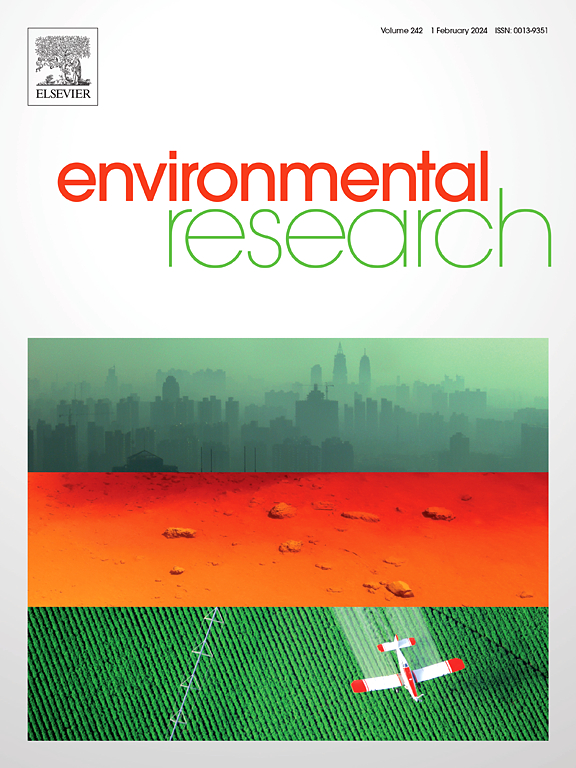在新形成的内陆湿地中,微生物坏死碳有助于土壤有机碳的积累和稳定。
IF 7.7
2区 环境科学与生态学
Q1 ENVIRONMENTAL SCIENCES
引用次数: 0
摘要
内陆湿地可能是一个重要的 "碳汇",而新形成的内陆湿地的时序发展为研究植物和微生物死亡碳(PlantC 和 MNC)对土壤有机碳(SOC)稳定的动态影响提供了一个天然而合适的机会。研究采用了时空时序法,并在新形成的内陆湿地的三个年龄段(2 年、5 年和 16 年)建立了小区。采集了地表(0-10 厘米)和地下土壤(20-30 厘米)的土壤样本。结果表明,地表土壤中 SOC、PlantC 和 MNC 的积累量明显高于地下土壤。此外,在湿地生态系统中,地表和地下土壤中的 MNC 储量都比 PlantC 多。在时序发展过程中,SOC 及其组分的积累动态与 MNC 相似,在表层和地下土壤中均呈现先增加后减少的趋势,只有地下土壤中的游离颗粒有机碳除外。结构方程模型显示,受环境变量影响的 MNC 变化是表层和地下土壤 MAOC 动态变化的主要原因,这表明 MNC 对 MAOC 的贡献将是新形成的内陆湿地碳稳定的主要途径。此外,表层土壤中 MNC 的积累与 pH 值、CEC 和土壤质地密切相关,而地下土壤则受土壤养分(TN 和 NH4+-N)的影响。特别是,尽管在 16 年的湿地中 SOC 储量不断减少,但由于单个氨基糖的持续增加,其稳定性显著增强。这项研究提供了 SOC 积累动态的新信息,并强调了 MNC 对新形成的内陆湿地 SOC 固碳的重要意义,对了解湿地 SOC 储量动态和稳定机制具有重要意义。本文章由计算机程序翻译,如有差异,请以英文原文为准。

Microbial necromass carbon contributed to soil organic carbon accumulation and stabilization in the newly formed inland wetlands
Inland wetlands might be an important “carbon sink”, and the chronosequence development of newly formed inland wetlands offers a natural and suitable opportunity for studying the dynamic effect of plant and microbial necromass carbon (PlantC and MNC) on the soil organic carbon (SOC) stabilization. The space-for-time chronosequence approach was used and plots were established in the three ages of newly formed inland wetlands (2, 5, and 16 years). Soil samples were collected in the surface (0–10 cm) and subsurface soil (20–30 cm). Results showed that accumulation of SOC, PlantC, and MNC were significantly larger in the surface than those in the subsurface soil. Moreover, MNC stocks were more abundant than PlantC in the wetland ecosystem both in the surface and subsurface soil. During the chronosequence development, dynamics of SOC and its components accumulation were similar to MNC, both exhibiting an increasing and then decreasing trend in the surface and subsurface soil, except for free particulate organic carbon in the subsurface soil. Structural equation models revealed that changes of MNC affected by environmental variables were the main cause of MAOC dynamics both in the surface and subsurface soil, suggesting that contribution of MNC to MAOC would be the key way of carbon stabilization in the newly formed inland wetlands. Furthermore, MNC accumulation in the surface soil was closely linked to pH, CEC, and soil texture, while in the subsurface soil affected by soil nutrients (TN and NH4+-N). Particularly, despite the decreasing SOC stocks in the 16-year wetland, the stability has significantly enhanced due to the increasing persistent individual amino sugars. This study provides new information on the dynamics of SOC accumulation and highlights the significance of MNC on the SOC sequestration in the newly formed inland wetlands, which is important for the understanding of wetland SOC stock dynamics and stabilization mechanisms.
求助全文
通过发布文献求助,成功后即可免费获取论文全文。
去求助
来源期刊

Environmental Research
环境科学-公共卫生、环境卫生与职业卫生
CiteScore
12.60
自引率
8.40%
发文量
2480
审稿时长
4.7 months
期刊介绍:
The Environmental Research journal presents a broad range of interdisciplinary research, focused on addressing worldwide environmental concerns and featuring innovative findings. Our publication strives to explore relevant anthropogenic issues across various environmental sectors, showcasing practical applications in real-life settings.
 求助内容:
求助内容: 应助结果提醒方式:
应助结果提醒方式:


